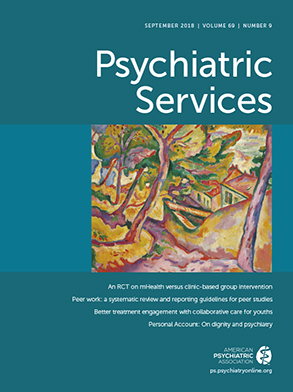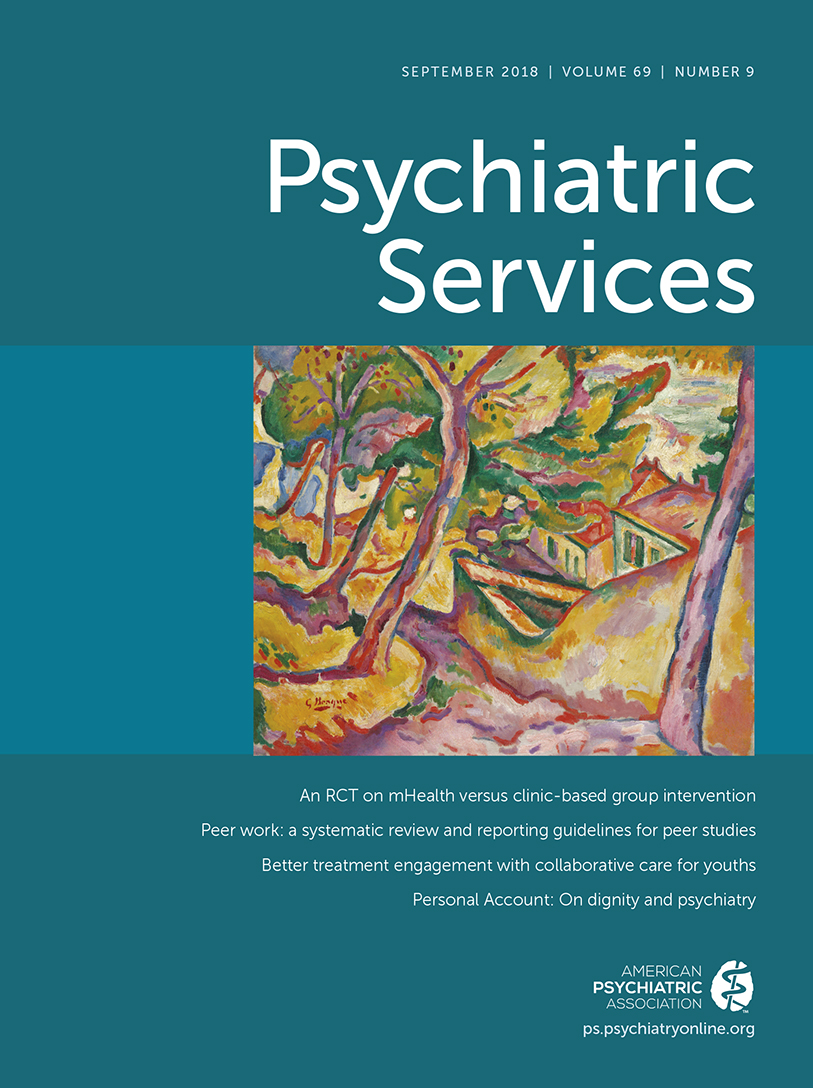Psychosis is a serious mental health condition, characterized by positive (hallucinations and delusions), negative (apathy and withdrawal), disorganized, and affective symptoms (
1). The global disease burden of schizophrenia spectrum psychosis is high (
2), both on a personal and societal level. On a personal level, psychosis is associated with physical morbidity, early death, and poor quality of life. At a societal level, the effects of psychosis include the cost of formal and informal care and lost productivity. Since the late 1990s, international guidelines for the treatment of schizophrenia and psychosis have consistently recommended using cognitive-behavioral therapy (CBT) for psychosis (CBTp). For those in close contact with families, a form of CBT called family interventions in psychosis (FIp) is also recommended (
1).
Drawing on evidence-based cognitive models of psychosis and caregiving, the interventions aim to improve well-being and functioning by changing appraisals of and responses to distressing or problematic experiences (
3). Meta-analytic evidence suggests that these interventions have the potential to provide cost-effective delivery of treatment (
1,
2), given that they are associated with small but consistent improvements in functioning and with reductions in the use of inpatient beds and crisis services.
However, compliance with guidelines is poor, despite the severity of the condition, evidence for the clinical and cost-effectiveness of recommended interventions, and demand from service users and families. In the United Kingdom (UK), CBTp is delivered to fewer than 10% of persons with psychosis, and delivery rates of FIp are even lower (
2). Strategies to improve implementation, therefore, are a focus of interest. The literature identifies four key aspects of implementation of CBTp and FIp, including adequate training, time for delivery, and supervision for staff; systems to identify the target caseload and monitor access, provision, and outcomes; effective pathways for offering and delivering therapy; and organizational support (
4). This column reports on implementation and training work in the South London & Maudsley National Health Service (NHS) Foundation Trust (SLaM) and at King’s College London (KCL) in the UK and local experiences of two recent national implementation programs. Successful strategies, limitations, implications, applicability to other settings, and areas for future development are highlighted.
Local Implementation
Our local implementation work aimed to improve routine care to meet the psychological therapy recommendations of the UK National Institute for Health and Care Excellence (NICE) schizophrenia guidance—to offer CBTp to everybody with psychosis and FIp to everybody with psychosis who is in close contact with a family member (
1,
5). We offered workshops and supervision to psychological therapists to engage our community and inpatient mental health teams, which led to the development of specialized training in CBTp
. We supported services to produce case registries of people with schizophrenia spectrum psychosis, their contact with caregivers, provision of recommended psychological therapies, and pre-post therapy outcomes. We found that given the difficulties in engaging people with psychosis, offers of therapy were best made by a therapist who could “match” their approach to the person’s presentation, accommodating, for example, high conviction in an external source of the difficulties. For the wider workforce, offers were better limited to agreement to an initial conversation with a therapist colleague, rather than directly discussing therapy (
5).
Organizationally, an implementation steering group was created to oversee the project. Each team identified a champion to join the steering group and guide the team’s work, and senior managers were asked to routinely report treatment delivery to their managers. The Trust allocated information technologist time to automate delivery and outcomes reporting, using computerized patient records. Our delivery rates have steadily improved and, through a recent investment in specialist therapy posts in dedicated psychosis care pathways, have reached three times the national average, with pre-post outcomes of medium effect size. Challenges include identifying the target caseload in the context of heterogeneous presentations and diagnostic uncertainty and ensuring high rates of completion of outcome measures so that data are representative. Rating every session and using graduate psychologist assessors—rather than relying on therapists who may prioritize other therapy demands over collecting outcome data—have improved paired outcome completion rates (
6).
CBTp Training
To better train the therapy workforce, we developed a two-year postgraduate CBTp program at KCL (
7), which has now run for 15 years. The program emphasizes supervised practice—students work with at least four patients and are closely supervised through audio recording of treatment sessions. To ensure that supervision is of a sufficiently high standard, program supervisors are required to have service delivery and management experience and to have received close, expert supervision of their own therapy skills through research, training, or practice in a center of excellence. We have published preliminary evidence of positive patient outcomes during training (
8). We train students to work effectively as part of the wider management of the condition in their service context and to actively identify and engage the target population, as they are often not referred (
5).
Implementation has been best for those with postgraduate academic qualifications, who are employed in roles with at least half of their working hours dedicated to therapy delivery (i.e., protected from competing service demands) during and after training (
7). Successful implementation has necessitated robust liaison between academic and clinical organizations, with the university accommodating variability in program size and expected income according to workforce demand and funding. The university has also demonstrated flexibility in completion of program requirements, given that students train while working full-time and have a complex, high-risk caseload. Training supports graduates to arrange ongoing local supervision; to establish systems for managing and monitoring offers, delivery, and outcomes; and to act as champions for therapy delivery in changing service contexts. We have offered free “top-up” supervision groups for staff who have completed our training but do not have the specialist supervision in place to support implementation.
Implementation in South East London
During 2012, the UK government launched plans to extend the Improving Access to Psychological Therapies (IAPT) program for people with anxiety and depression to people with serious mental illnesses, including psychosis, bipolar affective disorder, and personality disorders. Potential demonstration sites were invited to compete for funding. Selection was based on organizational readiness (established systems for identifying cases; monitoring offers, delivery, and outcomes; and training and supervising staff) to rapidly translate new funding into therapy delivery and to show how this could be achieved.
Our local services in SLaM hosted one of the two selected psychosis sites (
6). We used the funding to appoint therapists who had been trained and had achieved competence in the delivery of CBTp and FIp, as assessed with standardized measures (
7), or who were willing to complete training. We aligned the new provision closely with routine community mental health care to ensure a steady flow of suitable referrals, but we operated alongside rather than wholly within the team, to prevent therapists from being overwhelmed by other service demands, such as managing crises and risks. The sites ran for three years, with six- to 24-month follow-ups completed during 2016. The main outcome measure—psychological well-being—was completed every session, acceptability was good, and rates of paired completion were high (97%). Graduate assessors completed longer assessments before therapy, midway through therapy, and after therapy.
Building on IAPT-SMI
From 2015 to 2020, further government funding has been allocated to improve access to NICE-concordant care, including CBTp and FIp, starting with early intervention psychosis (EIP) services. The EIP services usually provide two to three years of multidisciplinary care for first presentations of a range of psychotic conditions. There are plans to extend the access initiative over time to cover services for established psychosis (second or later episodes). During 2015–2016, funding for training was awarded by competitive tender to universities and other training providers, based on the training providers’ ability to train newly appointed and existing EIP therapists to the specifications of the IAPT-SMI CBTp and FIp competence frameworks. FIp training was delivered early in 2016, most commonly as a five-day course in behavioral communication skills; locally we also offered one year of training in cognitive-behavioral family intervention, including supervised practice, with good impact on delivery. For CBTp, brief supervisor training began early in 2016, and therapist training began in September 2016. Courses have offered “top-up” specialist training for those with preexisting competency in CBT for emotional disorders and two-year programs that start with CBT for emotional disorders. There are now nine NHS-commissioned specialist CBTp courses in centers of excellence in England, most newly established as a result of the commissioned EIP training. In terms of the success of the initiative, delivery rates have improved, but work is ongoing to improve data quality and to safeguard allocated funds in the face of other financial pressures.
Lessons Learned, Policy Implications, and Future Directions
Our implementation efforts over time show how targeting resources can improve delivery and build systems for implementation. Effective specialist training and supervision and clear access routes for the target caseload are the cornerstones of improved delivery. Developing training pragmatically—through research, clinical, and professional training centers of excellence, where there is a critical mass of expert practitioners—has established professional training and practice, sidestepping the difficulties of effecting widescale change in trainers’ knowledge and attitudes, which have been identified as key impediments to national implementation in the United States (
9). Trained practitioners can develop systems for monitoring access, delivery, and outcomes while building relationships with wider services. In so doing, they can also promote support of the organization with strategies tailored to their specific local and national context (e.g., different psychosis prevalence rates and service or funding models).
Nevertheless, even following substantial, successful implementation work, delivery rates of CBTp and FIp in the UK continue to fall short of NICE recommendations. Notwithstanding evidence of cost savings through reduced inpatient and crisis service use, sustained investment has been required to increase delivery. No service model as yet has increased access to CBTp or FIp by improving existing services without an additional investment (e.g., for training). Significant changes to services may therefore be required to fully meet guidance with limited investment, such as the development and adaptation of low-intensity, brief, or protocol-based interventions that could potentially be delivered by a wider workforce alongside delivery of standard, individualized CBTp and FIp (
10). For now, research and funding policy for achieving universal access to psychological treatment of psychosis should focus on two goals—the continued development and refinement of therapies to achieve greater effects more consistently and the development of models of therapy training and delivery that are most efficient across service contexts and for the widest population possible.

